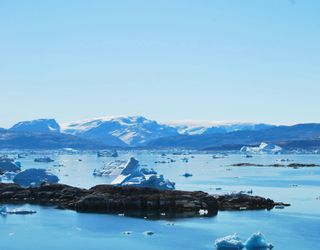Certain regions of the world will become uninhabitable by 2050 according to NASA, which sectors will be affected?
According to a NASA study, heat could make life difficult or even impossible for humans in certain regions of the world in the future.

Based on data from its satellites and using a particular thermal index, the wet bulb, NASA recently estimated that some regions of the world will be made uninhabitable by global warming within 30 to 50 years.
A thermal index to assess the risk for humans: the wet bulb
It is possible to assess the degree of discomfort related to heat and the risk it generates for our health. To do this, scientists use two particular clues:
- The heat index: which combines ambient air temperature and relative humidity to the shade;
- The wet bulb (or wet thermometer temperature): which characterises the lowest temperature of an object or body that cools when moisture evaporates from it. This index is considered more precise and less subjective than the previous one.
In other words, the wet bulb measures our body's ability to cool down thanks to sweating in hot and humid weather. From a certain level of heat and humidity combined, our body can no longer lower its temperature and it is at this point that the risk of death related to heat becomes real.
This index was originally measured with a thermometer surrounded by a wet cloth and exposed to the open air. The latter then recorded the temperature at the time the water evaporated from the laundry, which gave a precise value compared to the heat index. Today, this index is calculated from electronic equipment in weather stations, working with satellite data.
In general, the majority of hot and humid regions of the planet have a wet bulb index that does not exceed 25 to 27°C, which is uncomfortable but not particularly dangerous for our body, except in case of intense physical activity. Scientists consider that the highest wet bulb index that a human can withstand is 35°C for six hours, beyond that, the risk of death is much greater or even assured in the most extreme cases.
Regions too hot and humid for human survival from 2050?
Satellite data and weather stations scattered around the world have already made it possible to record wet bulb indices above 35°C several times for about fifteen years, mainly in the subtropical regions of Pakistan and the Persian Gulf.
Based on this observation, and using forecasting models that take into account the evolution of global warming, NASA has tried to determine the countries where the wet bulb index will be too high for humans to survive.
According to their results, many countries in South Asia, the Persian Gulf and countries bordering the Red Sea could regularly observe wet bulb indices above 35°C by 2050, making them dangerous or even uninhabitable in the event of a wet heat wave. Eastern China and part of Brazil could also become difficult to live in by 2070, just like some American states.
This map shows the areas that could see extreme (32°C wet bulb) or greater heat stress at least 10 days per year at 4°C warming.
— Andrew B. Watkins (@windjunky) November 9, 2021
At a wet bulb of temp of 35°C the human body cant survive (the air is so hot/humid you cant evaporate water off your skin to cool down fast enough) https://t.co/82g2Lod9zp pic.twitter.com/ezc0VE5KXt
The scientists also specified that the risk of heat-related death is already present even with wet bulb indices below 35°C. For example, the June 2021 heat wave between the Northwest of the United States and Western Canada caused the death of 1,400 people while the wet bulb had not exceeded 25°C.
According to IPCC data, the frequency of extreme heat episodes will be multiplied by four in the world by the end of the century for a temperature increase of 1.5°C compared to the pre-industrial era, which will lead to more and more heat-related victims and not only in countries where the wet bulb will exceed 35°C more regularly than today.








